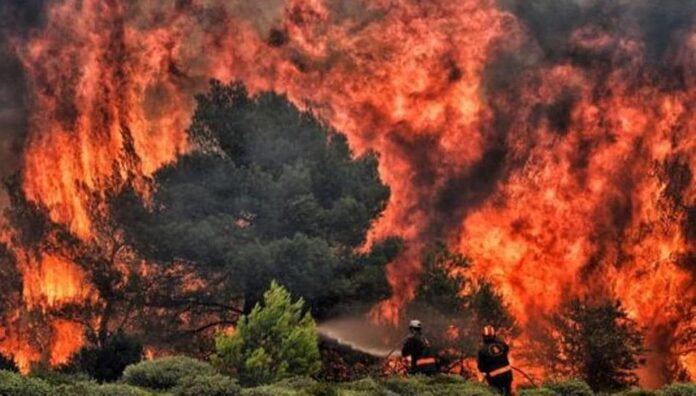According to the report, investigators were also looking into how forest right claimants were involved in starting fires and what their intentions were under the Forest Rights Act (FRA).
According to the results of an investigation by Goa’s Forest Department, although the fires that raged throughout the state in the first fortnight of March were largely started by unprecedented extreme weather conditions, there were also some man-made, albeit largely unintentional, causes for forest fires.
In addition, it was noted in the report Forest Fire Incidences in Goa (March 5 to March 15, 2023) that a total of 34 cases had been filed in connection with the fires against two people who have been identified and a number of others who are unidentified. The report was presented to the state Assembly during the recently concluded Monsoon Session. The study also stated that all forest divisions believed that although mostly unintentional, man-made fires were to blame for the forest fires at this point.
According to the report, investigators are also looking into how forest right claimants, as defined by the Forest Rights Act (FRA), intend to use their land to start fires. Seven of the 74 fire events that were reported in the state in the first half of March involved sites where forest rights claims were made, according to the report.
The Forest Department’s investigation showed that weather factors such little rainfall the previous year, record-breaking high summer temperatures, low humidity, and strong winds made the forest fires more intense in 2023 than in prior years.
The report stated that due to a prolonged dry spell from November 2022 to March 2023, which was caused by less rain in the previous year, 2022, all the lush ground vegetation that had grown in the previous three years due to an abundance of rain was transformed into enormous amounts of dry fuel/biomass for the current year’s fire incidences.
The practice of “slash burning” at cashew farms is mentioned in the study as another example of man-made fires. According to the report, the main causes of the forest fires included other elements like burning grass for pastoral and agricultural purposes and burning dry leaf litter in cashew plantations to make it easier to harvest cashew fruits.
The majority of cashew plantations are either adjacent to forests or contain pockets where forest rights settlements have been made, therefore the spread of fire to the forest is consequential and unavoidable in such circumstances, according to the paper.
State Forest Minister Vishwajit Rane had stated that the fires appeared to be intentionally started and to be man-made as they were burning throughout Goa. A high-level probe into whether the fires were intentionally set has been demanded by opposition parties.
While forest fires in Goa are an annual phenomenon, with the deciduous to semi-evergreen forests of the coastal state impacted during the months of March to May on a minor scale every year, the fires in the first two weeks of March this year saw fires at a much bigger scale.
The Forest Department had requested the Navy and the Air Force to send out helicopters to put out fires since they were spreading on hilltops, in inaccessible forest areas, and across wildlife sanctuaries.
Between March 5 and March 14, 74 fires were reported to the Forest Department, of which 59 were in government forests (including protected areas), 12 were on private property, three were in private woods, and one was on comunidade land. Three wildlife sanctuaries were the scene of up to 32 fire occurrences, including 17 in the Mhadei Wildlife Sanctuary, 7 in the Bhagwan Mahaveer Wildlife Sanctuary and National Park, and 8 in the Netravali Wildlife Sanctuary. The fires in the state affected about 418 hectares, of which 348 hectares were in the government forest area, as per the report.
More than 587 hectares of land have been affected by a total of 187 forest fires that have been documented in Goa over the last five years, starting in 2017. There were 58 reported fires in 2017–18, followed by 34 fires each in the following two years. While only 15 fires were reported in 2021–22, the number of fire occurrences rose to 46 in 2020–21.
According to the government investigation, no losses to any types of endangered animals or flora were detected.
Mammals and birds had a much better chance of escaping to safety than slow moving reptiles on the ground since the state’s forest fires were surface or creeping fires. Two snake deaths were reported. The research said that the habitat of species, particularly that of reptiles, rodents, birds (caused by damage to anag trees), and others, was impacted in the burned areas.
According to the study, no people, animals, or property were harmed; nevertheless, crops like cashew and coconut suffered damage primarily in areas without woods.
































